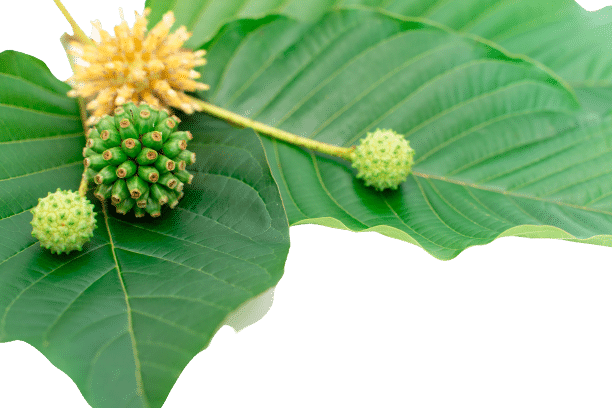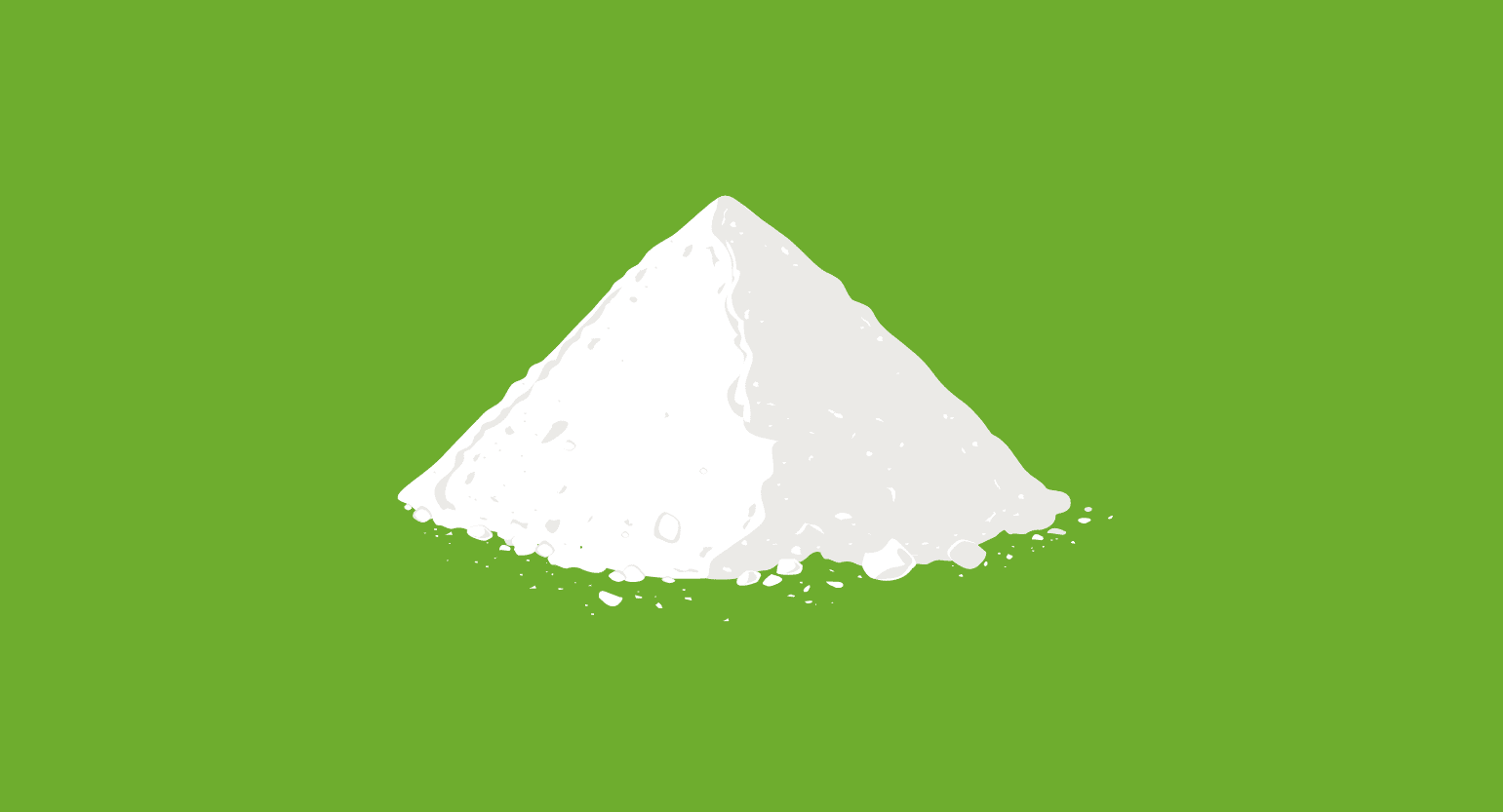Comparison Summary: Kratom vs. Phenibut
| Kratom | Phenibut | |
| Dosage Range | 2.5 grams to 10 grams per day | Up to 1.5 grams per day |
| Common Side Effects | Acid reflux, headaches, nausea, flatulence, and skin rashes | Nausea, fatigue, dizziness, breathing difficulties, balance issues |
| Origin | Southeast Asia | Russia |
| Potential For Addiction | Low to moderate | Low to moderate |
| Mechanism of Action | Interacts with opioid receptors | Interacts with the brain’s GABA system |
| Legality (USA) | Legal | Legal |
Kratom vs. Phenibut: What to expect
In terms of what to expect after taking a dose of each drug, we will first discuss the effects of kratom and how it can make you feel following ingestion.
The most prominently reported theme is a feeling of calmness and wellbeing, similar to the effects produced by opiates, which extend into feelings of euphoria at the higher doses.
Others report feelings of mental calmness without the loss of clarity of thought.
The most commonly reported negative side effect is nausea, reported by 16% of users — with others noting that they experienced chills and sweats.
Overall, the subjective effects of kratom appear to be relatively mild and enjoyable, with some important adverse physical side effects to be aware of.
You can expect some similarities in the effects of phenibut, with many people reporting calm-inducing effects, the relief of anxiety, and even increasing social confidence — all of which have also been reported by kratom users.
The effects can take anywhere from 2 – 4 hours to kick in, so it is advised that one should not take an additional dose for at least 24 hours, as overdosing can have some unpleasant side effects.
Once the effects start to take hold, an intense feeling of relaxation and calm is the most commonly reported theme.
There are some striking differences between kratom and phenibut; however, phenibut users have also reported that the drug can help them in the gym — with some claiming it has hormone-boosting properties, specifically human growth hormone.
These claims are unsubstantiated, but there hasn’t been sufficient research into the claim as of yet.
People also commonly report that phenibut helps with sleep and even sexual intercourse; one of the purported effects is that it helps men control their ejaculation.
Some of the negative side effects — which can vary depending on dosage —include sweating and nausea. Some bodybuilders who employ relatively high dosages, report feeling flushed, a spike in their heart rate and blood pressure, tingling sensations, and anxiety.
Phenibut can interact negatively with other substances — it is strongly advised that one should never mix phenibut with alcohol, not to mention benzodiazepines.
The drug is considered to be relatively safe when taken in recommended doses, which we will cover in more detail next.
Kratom vs. Phenibut: Dosage
The recommended daily starting dosage of phenibut is 200–300 mg for relaxation or a calming effect.
More experienced phenibut users go with 1–1½ grams per dose. And up to 3-times per week.
Since you can quickly build up a tolerance to phenibut, dosing less often is preferred. Many advise keeping phenibut use to once or twice per week in order to avoid side effects and a kind of hangover the next day.
Phenibut can be very addictive for some people, and the withdrawal from continuous use is particularly nasty. So if you’re going to try phenibut, make sure you follow dosage recommendations.
Kratom dosage in low quantities can produce a stimulant effect, whereas, kratom in higher doses tends to have a calming effect.
For reference, between 3 and 4 grams of kratom powder will produce a mild effect, and anything between 4 and 5 grams can produce a strong effect.
Capsules usually contain about 0.4 grams of kratom — so about ten of these would induce the milder range of effects, and between 10 and 13 one can expect the stronger effects to take hold.
You should be cautious when using kratom for the first time. Always start with a low dose and wait for the effect, as nausea may occur when the dose is too high.
Caution should also be exercised with substances that have a reinforcing effect, such as strong alcohol and raw cocoa.
The doses can be taken both soberly and after a meal. After a meal, it takes a little longer before the kratom works.
It is not recommended to use kratom once or several times over longer periods every day.
Kratom vs. Phenibut: Legality
In terms of legality, Kratom is legal throughout most of the United States, except for Alabama, Arkansas, Indiana, Rhode Island, Vermont, and Wisconsin.
It is a largely unregulated product, and despite its medicinal use in some areas of the world, kratom is widely recognized as an addictive drug.
Within some of the states which designate kratom as legal, there are still varying regulations. Denver, Colorado, for example, considers it illegal for human consumption, and New Hampshire considers it illegal for people under-18 to possess.
Check your local laws and regulations surrounding the substance before attempting to purchase or obtain Kratom.
Kratom is also illegal in many other countries, and as the drug becomes more widely known, it could potentially be banned at any point.
Here is a list of countries where it is already illegal to buy, sell or possess kratom:
- Australia
- Denmark
- Finland
- Israel
- Japan
- Latvia
- Lithuania
- Myanmar
- Malaysia
- New Zealand (unless the person has a prescription from a doctor)
- Poland
- Romania
- Russia
- Singapore
- South Korea
- Sweden
- Thailand
- Vietnam
Again, be sure to check the laws surrounding kratom in your home country prior to attempting to obtain it.
Regarding phenibut, its treatment under the law is quite similar to that of kratom, though perhaps even more lenient. The only countries where it is currently a controlled substance are Australia, France, Hungary, Italy, and Lithuania.
It is actually approved for medical use in various eastern European countries, such as Latvia and Belarus, which speaks to its potential benefits — though the FDA is not of the same opinion, and the drug remains unlicensed in America.
Kratom vs. Phenibut: Mechanism of Action
The substances each have different mechanisms of action when ingested; the following information is paraphrased from a review published in 2018.
“The leaves of Mitragyna speciosa (commonly known as Kratom) have been used traditionally for their stimulant, mood-elevating, and analgesic effects and have recently attracted significant attention due to increased use in Western cultures as alternative medicine.
The plant’s active alkaloid constituents, mitragynine, and 7-hydroxymitragynine, have been shown to modulate opioid receptors, acting as partial agonists at mu-opioid receptors and competitive antagonists at kappa- and delta-opioid receptors.
Additionally, both alkaloids are G protein-biased agonists of the mu-opioid receptor and, therefore, may induce less respiratory depression than classical opioid agonists.
The Mitragyna alkaloids also appear to exert diverse activities at other brain receptors (including adrenergic, serotonergic, and dopaminergic receptors), which may explain the complex pharmacological profile of raw kratom extracts, although characterization of effects at these other targets remains extremely limited.
Through allometric scaling, doses of pure mitragynine and 7-hydroxymitragynine used in animal studies can be related to single doses of raw Kratom plant commonly consumed by humans, permitting preliminary interpretation of expected behavioral and physiological effects in people based on this preclinical data and comparison to both anecdotal human experience and multiple epidemiological surveys.
Kratom exposure alone has not been causally associated with human fatalities to date. However, further research is needed to clarify the complex mechanism of action of the Mitragyna alkaloids and unlock their full therapeutic potential.”
The following information is gathered from another review from 2001:
“Phenibut (beta-phenyl-gamma-aminobutyric acid HCl), on the other hand, is a neuropsychotropic drug that was discovered and introduced into clinical practice in Russia in the 1960s. It has anxiolytic and nootropic (cognition enhancing) effects.
It acts as a GABA-mimetic, primarily at GABA(B) and, to some extent, at GABA(A) receptors. It also stimulates dopamine receptors and antagonizes beta-phenethylamine (PEA), a putative endogenous anxiogenic.
The psychopharmacological activity of phenibut is similar to that of baclofen, a p-Cl-derivative of phenibut.
A comparison of phenibut with piracetam and diazepam reveals similarities and differences in their pharmacological and clinical effects.
Phenibut is widely used in Russia to relieve tension, anxiety, and fear, to improve sleep in psychosomatic or neurotic patients, as well as a pre or post-operative medication.
It is also used in the therapy of disorders characterized by asthenia and depression, as well as in post-traumatic stress, stuttering, and vestibular disorders.”
Kratom vs. Phenibut: Anxiety & Insomnia
In terms of the potentially beneficial uses of each substance, such as their supposed effectiveness in treating anxiety, insomnia, and pain – we will now evaluate their strengths and weaknesses for each ailment.
Both drugs are reportedly effective in treating anxiety, and this is one of the main reasons people experiment with these substances in the West, as such conditions are on the rise.
Healthline.com said the following in relation to the anxiety-reducing effects of Kratom:
“In a 2018 study based on a survey of 8,049 people who use kratom, most people reported that a dose of up to 5 grams of powder taken up to 3 times per day was adequate to experience effects. It’s recommended that you start with a low dose, gradually increasing the amount until you achieve the desired effect.”
They also said:
“One 2017 review confirmed that among some users, Kratom enhances mood and relieves anxiety. The researchers also highlighted that Kratom can have sedative effects. Researchers have yet to examine whether side effects such as sedation can interfere with its purported benefits.”
Based on the available evidence and the reports of many users, kratom appears to be fairly effective in the treatment of anxiety and sleep disorders, due to its calming and sedative effects.
The substance is relatively new to Western science, and so there hasn’t been a tremendous amount of research into the pros and cons of using it to treat these disorders. However, there are countless anecdotal claims that Kratom can be effective.
Phenibut was actually developed as a treatment for anxiety by Russian chemists in the 1960s. In some countries, it is used to treat severe cases of anxiety and insomnia, which are brought on by a traumatic event (PTSD).
Although it is unregulated in America and most Western countries, many people do buy it online in order to self-medicate for anxiety and sleep disorders, with many people not wanting to opt for benzodiazepines like Xanax due to their addictive potential.
Phenibut use is widely reported as a good method for quelling anxious symptoms, which also helps with sleep problems because the user feels more calm and relaxed. It has become very popular in recent years – though Phenibut can also cause addiction after frequent use, so caution should be exercised.
Kratom vs. Phenibut: Pain Relief
In terms of treating pain relief, it is currently estimated that over 5 million people in the US are using Kratom as an alternative to opioids.
Kratom binds to the same opioid receptors in the brain, and throughout the body, so it has a strikingly similar effect to drugs such as morphine, though without the same level of respiratory depression occurring.
There is an observable analgesic or pain-reducing effect which takes place, so the drug certainly appears to have a similar potential to the more commonly used opioids such as morphine and oxycodone, and carries a lower risk for severe addiction, though it is still considered addictive.
Phenibut is also reported to have a pain-reducing effect on users and is similarly used as an alternative to opioids in the US.
It doesn’t affect the opioid receptors; rather it limits the number of signals the central nervous system sends to the brain, so the pain-relieving qualities could be comparable to that of alcohol, which depresses the nervous system and can cause pain relief as a result.
However, some reports suggest that phenibut withdrawal can occur after consecutively using it for as little as three days — so it might not be a good long-term solution for the treatment of chronic pain.
What is Phenibut?
Phenibut is a synthetic drug that was first produced in Russia for the treatment of anxiety and insomnia. It’s a neuropsychotropic drug, which means it affects behavior, mood, thoughts, or perception by adjusting the levels of neurochemicals such as gamma-aminobutyric acid (GABA) in your brain.
When used as a GABA supplement, drugs such as phenibut can produce a calming effect. This is because GABA is an inhibitory neurotransmitter, blocking or inhibiting specific brain signals and decreasing the activity in your nervous system.
While phenibut is not approved for medical use in the United States and most of Europe, it’s widely marketed as a supplement.
Phenibut is also used as a form of recreational drug for its powerfully relaxing effect profile. In this culture, it’s also known as pbut, noofen, and party powder.
Phenibut is usually taken in tablet form, but it can also be administered intravenously.
Although phenibut has been available for over 60 years, there isn’t any solid evidence that it works — at least, not from a clinical perspective. Researchers still don’t know how much of its active ingredients actually reach the brain when not produced by the brain itself.
What is Phenibut Used For?
The uses of phenibut are many and wide-ranging. In Russia, phenibut has been used to treat depression, PTSD, stutter, and vestibular disorders.
Other applications phenibut is Used to Support:
- Anxiety relief
- Muscle pain or tension
- Poor focus & concentration
- Insomnia
- Alcoholism
- Motion sickness
Is Phenibut Dangerous?
Phenibut comes with its fair share of side effects. Unlike kratom, some of these can be quite serious and may require medical attention.
The side effects of phenibut may include:
- Difficulty breathing
- Loss of consciousness
- Fatigue
- Dizziness
- Nausea
- Poor muscle coordination
Although current research is limited on the topic, initial analysis and several case studies show that phenibut can lead to addiction.
Research into phenibut withdrawal symptoms has shown that withdrawal symptoms from its long-term use can include:
- Agitation
- Psychosis
- Palpitations
- Visual and auditory hallucinations
- Nausea and vomiting
Phenibut Withdrawal Symptoms
Phenibut comes with a long list of withdrawal symptoms. Most of them are more severe than expected. It can also take up to six months for withdrawal symptoms to subside.
Phenibut withdrawal symptoms include:
- Agitation
- Anxiety
- Auditory and visual hallucinations
- Cognitive deficits
- Depersonalization
- Depression
- Dizziness
- Fatigue
- Fear
- Heart palpitations
- Insomnia
- Nausea
- Reduced appetite
- Tremors
- Vomiting
Dealing with Phenibut Withdrawal
Symptoms of phenibut withdrawal can last up to six months. Some of the longer-standing symptoms include:
- Agitation – Several days
- Nausea – One week
- Depression – Two to three weeks
- Cognitive deficits – Two to three weeks
- Dizziness – Up to a month
If you take phenibut even occasionally for more than a few weeks at a time, your risk of developing an addiction goes way up.
Withdrawal begins in as little as three to four hours after your last dose. The most acute symptoms last for several days to weeks and can be followed by a protracted withdrawal phase [2].
Hospitals have treated people who had auditory and visual hallucinations during withdrawal. Additionally, there have been people who suffered from suicidal thoughts, psychosis, and delusions.
In one particularly notable case, a person saw disturbing sexual images, flashes of color, and even dragons [3].

What is Kratom?
Kratom (Mitragyna speciosa), is a tropical tree found in Southeast Asia. It’s native to countries including Thailand, Indonesia, Malaysia, Myanmar, and Papua New Guinea.
Kratom leaves have been used since the 19th century for medicinal purposes — they are traditionally chewed, cooked into meals, or brewed into tea to fight fatigue and increase work productivity in farming communities.
Kratom is now used in the Western world, both medicinally and recreationally, and can now be purchased in liquid format, powders, pills, and even gums. It’s increasingly marketed as a treatment for everything from mood enhancers to the treatment of opioid withdrawal.
What is Kratom Used For?
The recreational effects of kratom are dependent on the dose taken, with small quantities providing stimulatory effects similar to those of cocaine and larger doses producing sedative-narcotic effects that resemble those of opiates.
Kratom is also used for the below medicinal purposes. However, there isn’t enough supporting research to prove that the use of kratom is either safe or effective.
The benefits of kratom may include:
- Increased energy
- Anti-inflammatory
- Appetite-suppressant
- High blood pressure treatment
- Sedative
- Prevent muscle aches and spasms
- Diarrhea treatment
- Anti-anxiety and depression medication
- PTSD treatment
- Decrease symptoms of opioid withdrawal
Is Kratom Dangerous?
For the vast majority of responsible kratom users, this herb is a relatively safe substance to consume.
However, people can potentially develop addictive behavior towards kratom.
Additionally, inappropriate kratom use may cause the following side effects:
- Anxiety
- Depression
- Dizziness
- Hallucinations
- Insomnia
- Liver damage
- Loss of appetite
- Seizures
- Severe weight loss
In 2018, kratom was also linked to a salmonella outbreak in the States, with 11 people requiring hospitalization.
Can You Combine Kratom & Phenibut?
While widely disputed by medical professionals, many people are combining kratom with phenibut. Combining the two substances is said to make the effects of both substances last longer.
One study conducted by the British Medical Journal (BMJ) followed a 35-year-old man who claimed that taking phenibut and kratom together helped him cope with alcohol withdrawal symptoms.
However, there is still a major scarcity of medical research conducted into combining kratom and phenibut.
Supporters of combining the two advise that small doses of each can be taken until such a time that the consumer has built up a tolerance. After which, the dose would need to be increased. It comes with a heavy warning that the increase of dosages could lead to a higher risk of addiction, so it’s essential to take breaks from both substances periodically.
On the other hand, medical professionals feel that the combination of the two could cause severe physical and mental health problems. That’s directly in relation to the risk of addiction mentioned above. As each of the drugs can have effects such as addiction and withdrawal symptoms on their own, these effects could become more severe when the two are combined.
Side effects that could result from mixing kratom & phenibut include:
- Agitation
- Depression
- Seizures
- Hallucinations
- Heart issues
- Sedation
Therefore, it’s extremely important to exercise caution if choosing to combine these drugs and avoid operating a vehicle while under their influence.

Can You Overdose from Kratom or Phenibut?
Between July 2016 and December 2017, there were over 90 reported cases of fatal overdoses involving the use of kratom. While some of the deaths were purported to have included additional substances, the fact that not enough research is available to prove or disprove the mix of kratom with other substances should be a reason for caution.
Although fewer reports of phenibut overdose are available, there have been some with phenibut users being taken to hospital due to erratic behavior, confusion, and possible seizures.
Other symptoms of a phenibut overdose include nausea, vomiting, extreme drowsiness, lowered blood pressure, and renal impairment.
It’s important to remember that although it’s legal to possess both substances in the United States, both kratom and phenibut have not been approved for clinical use.
The FDA has ruled that phenibut has no medical value, and many countries have criminalized its use. However, studies have shown that phenibut remains widely available online anyway.
Learn More About the Signs and Symptoms of Kratom Overdose here.









